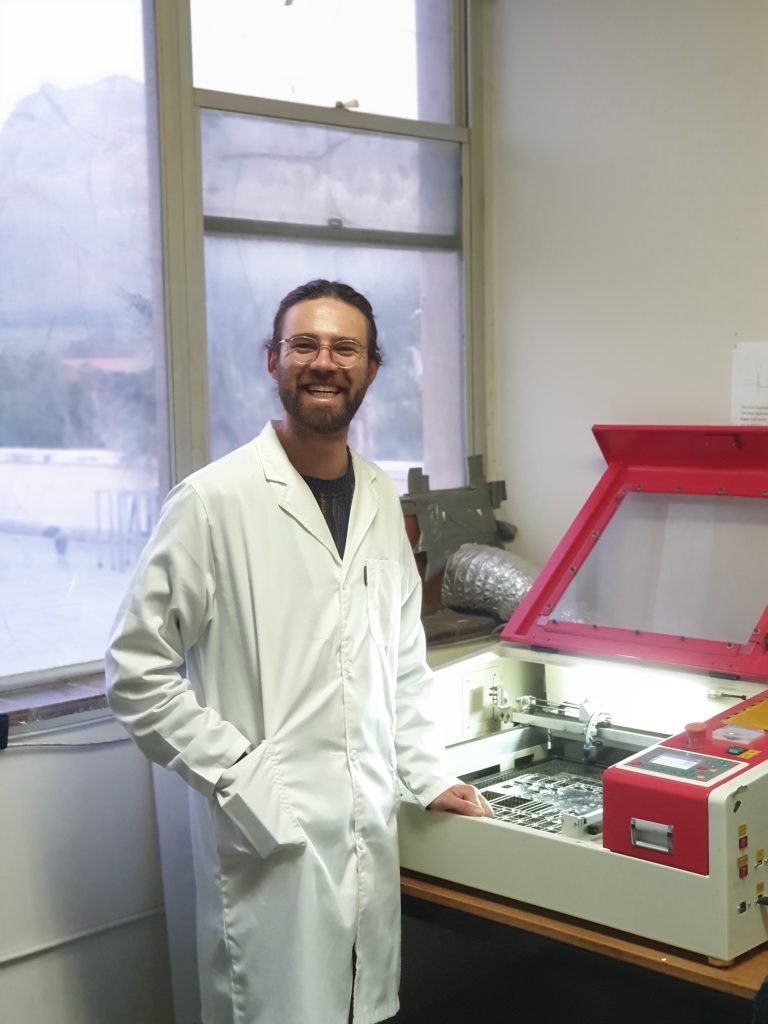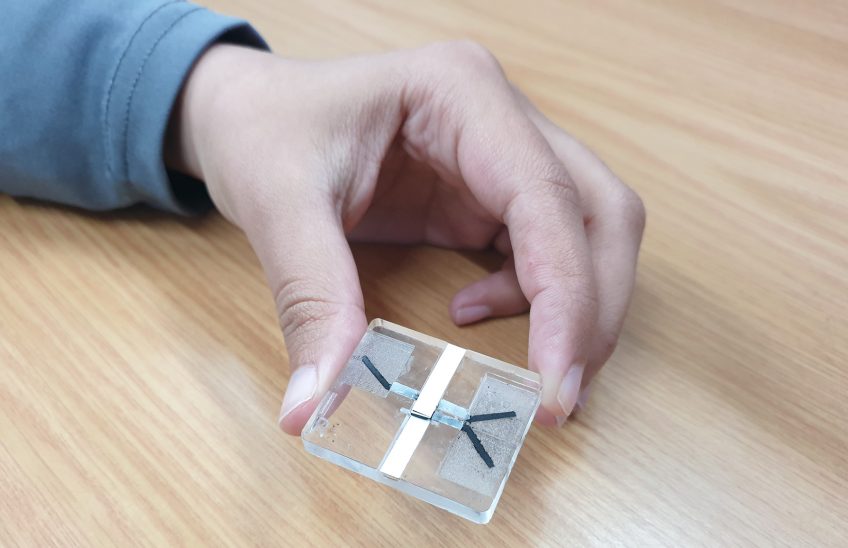Mycobacterium tuberculosis is one of the top ten causes of death in the world. However, current diagnostics tests for tuberculosis are either limited in sensitivity and costs or are not adaptable to diverse types of patients. The status of the infection is furthermore challenging to determine, and critical early detection is still not as fast and robust as required.
During his master’s studies, Stephan Schoeman, currently a PhD candidate in the Department of Electrical and Electronic Engineering at Stellenbosch University, developed an electrochemical sensor to determine interferon-gamma concentration in a solution. Interferon-gamma is a cytokine and is instrumental in diagnosing tuberculosis infection. The cytokine plays a vital role in inducing and modulating an array of immune responses. The master’s project succeeded in determining the viability of electrochemical detection of interferon-gamma. The knowledge gained in the project paved the way for future research in the specific field.

Lateral flow immunosensor
Stephan’s current research focuses on further developing his sensor by incorporating a lateral flow system as the delivery mechanism of a target protein. The integration of the two methods could potentially open up a sensing platform for point-of-care diagnostics. In principle, the device quantifies a specific protein without specialised equipment only available in laboratories. Resource-constrained settings drive the need for actual point-of-care diagnostic devices that provide real-time diagnostics or aid in pre-screening patients.
Advantages of lateral flow as a quantitative sensing method
Lateral flow assays are the technology behind low-cost, rapid, and portable detection devices. It has garnered much interest due to its potential for rapid diagnosis and point-of-care testing. Some advantages include rapidity and single-step assay, cost-effectiveness, small sample volume, and extended shelf life under various environmental conditions. In general, lateral flow devices are limited to qualitative measurements. The integration with an electrochemical device overcomes this limitation.
“The manufacturing of a stable sensor is the most challenging aspect of this project. In principle, we know what measurements we are looking for, but finding the sensor that will overcome the physical limitations and provide us with the ideal signal is the trick,” says Stephan
Going forward
Ultimately, the goal is to have a sensor that will quantify C-reactive protein (CRP). CRP is a general marker that indicates inflammation in the body and is a stepping stone towards diagnosing TB. The hope is that the functionality of the device can be expanded to quantify multiple markers simultaneously. Stephan is currently working with Prof W.J. Perold (Electrical and Electronic Engineering) and Prof G. Walzl (Molecular Biology and Human Genetics).
Read our recent articles:
The optimisation of nanofiber-based biosensors for the detection of targeted antigens
Resistive Biosensor for the Detection of LC3 Protein in Autophagy





